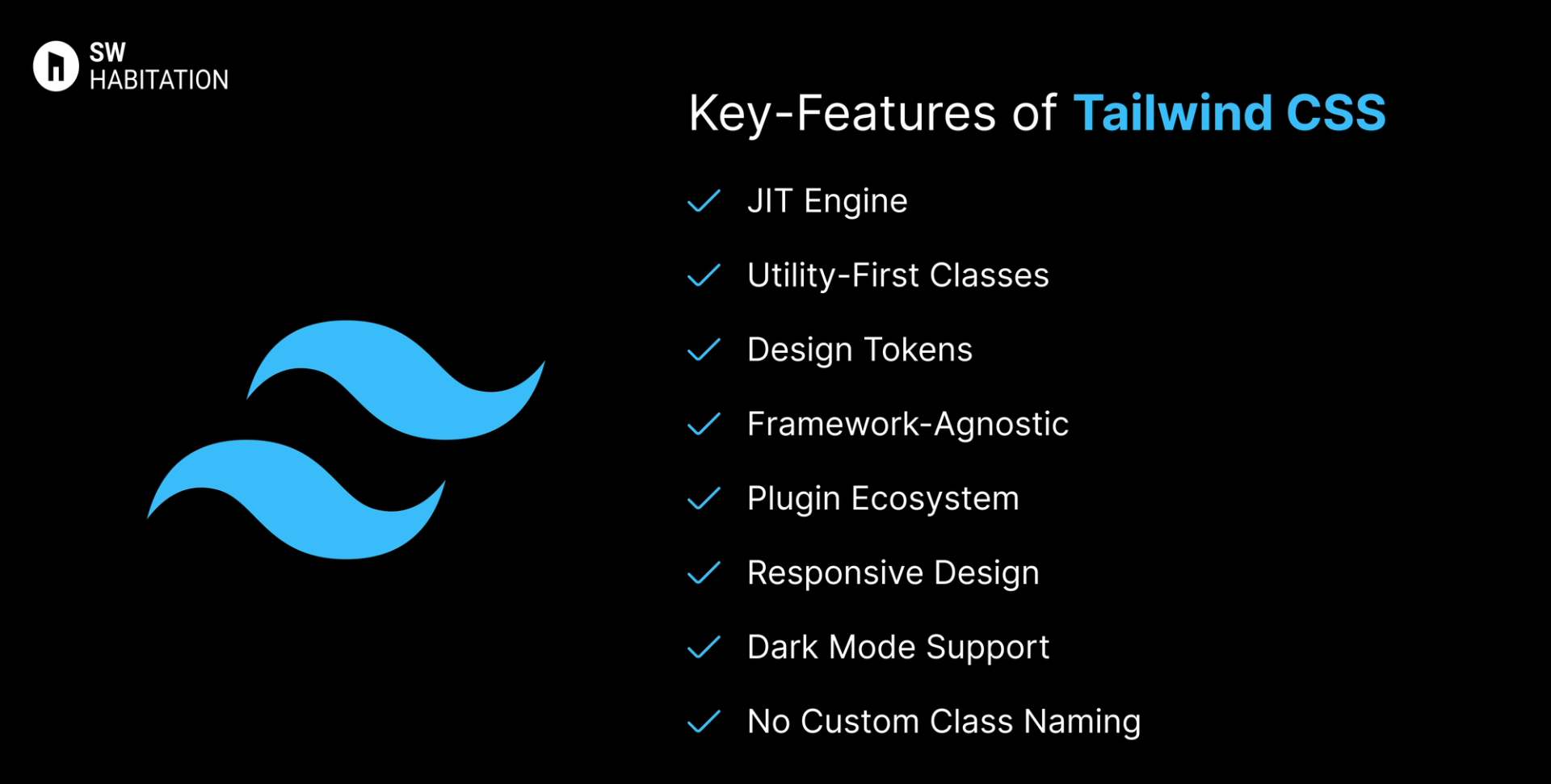Bootstrap vs. Tailwind CSS

Bootstrap

Tailwind CSS
You know how building a website can feel like a lot, especially when you’re trying to style every little thing yourself? Buttons, forms, layouts… it adds up fast. That’s where UI frameworks really save the day. They give you a bunch of premade design elements that you can just drop in and go. It’s like having a design starter pack that helps your site look clean and professional, without spending forever tweaking the details.
What is Bootstrap ?
Bootstrap is the most popular CSS Framework for developing responsive and mobile-first websites. Do you know it was originally developed by Twitter now X and is now maintained by a large community of developers. Bootstrap provides a collection of pre-designed HTML, CSS, and JavaScript components that can be used to build websites quickly and easily.
Key Features of Bootstrap


- Responsive Grid: 12-column Flexbox grid with multiple breakpoints.
- Prebuilt Components: Includes modals, tooltips, carousels, navbars, etc.
- JavaScript Plugins: Native JS components — no jQuery dependency now.
- Sass Source: Source code in Sass for easy customization.
- Utility Classes: Tons of helper classes for spacing, colors, displays.
- Theming Support: Customizable via Sass variables.
Advantages of Bootstrap
- Fast Setup: Quickly spin up pages with minimal styling needed.
- Consistency Across Browsers: Ensures uniform UI elements.
- Large Ecosystem: Thousands of themes, templates, starters available
- Modular: Easily import only needed components via Sass.
- Strong Community: Longstanding support and wide adoption.
Disadvantages of Bootstrap
- Learning Curve: Advanced customization requires more expertise
- Overuse of Classes: Cluttered HTML, harder to maintain.
- Heavy File Size: Includes unnecessary CSS/JS, increasing load times.
- Limited Customization: Hard to deeply customize without overriding defaults.
- Uniform Design: Sites can look similar unless customized heavily.
What is Tailwind CSS?
Tailwind CSS is a utility-first CSS framework that allows developers to design user interfaces by applying atomic utility classes directly in markup. Rather than offering prebuilt UI components, it empowers developers with building blocks to create fully customized and performance-optimized designs.
Key features of Tailwind CSS


- JIT Engine: Builds only the styles you use, resulting in small and fast CSS bundles.
- Utility-First Classes: Apply styling via single-purpose classes like p-4, text-sm, or bg-red-500.
- Design Tokens: Consistent spacing, sizing, and color scales across your design.
- Framework-Agnostic: Compatible with React, Vue, Svelte, Angular, and plain HTML.
- Plugin Ecosystem: Extend with official and community plugins for forms, typography, etc.
- Responsive Design: Built-in mobile-first breakpoints using prefixes like sm:, md: etc.
- Dark Mode Support: Easily implement dark mode using dark: variants or media strategies.
- No Custom Class Naming: Skip naming headaches now you can directly compose your layout visually with utility classes.
Advantages of Tailwind CSS
- No CSS Context Switching: All styling lives right in the markup — no need to jump between HTML and CSS.
- Framework Independence: Works with any modern frontend stack without restrictions.
- Design Control: Gives developers full control over the UI without being locked into component styling.
- Highly Customizable: Themes, spacing, fonts, and colors can be tailored to any brand or project.
- Consistent Design Language: Utility classes encourage consistency across the app.
- Great Ecosystem: Strong community support, tons of plugins, UI kits, and templates available.
- Performance Optimized: Small CSS bundles with tree-shaking and JIT mean faster load times.
Disadvantages of Tailwind CSS
- Verbose HTML: HTML/JSX can become cluttered with many class names.
- Initial Setup Time: Customizing themes and config files may be overkill for small projects.
- Steep Learning Curve: Takes time to get used to utility classes, especially for those used to traditional CSS.
- No Built-in Components: Unlike Bootstrap or Chakra UI, you need to build components from scratch.
- Harder for Designers: Designers unfamiliar with utility-first might find it harder to collaborate.
Comparison Between Bootstrap vs Tailwind CSS
Use Cases of Bootstrap
- Projects where consistency outweighs custom design
- Legacy apps or CMS integration
- Quick MVPs and prototypes
- Dashboard templates, admin panels
Use Cases of Tailwind CSS
- High-performance marketing pages
- Web apps that need full control over UX and design
- Custom-designed SaaS dashboards
- Design systems with strict branding guidelines
- Mobile-first responsive web apps
Other Resources
Conclusion
UI frameworks make building a polished website way easier. Whether you're working on something simple or a big project, they help you get things looking just right without having to stress over every little design decision. With ready-to-use components, responsive layouts, and modern styles, you can build faster and smarter.
So, pick one that works for you, and start creating a site that looks amazing from the get-go.
Frequently asked questions
Can I use Bootstrap without JavaScript libraries?
Yes, Bootstrap 5 bundles native JS components and doesn’t require jQuery.
Is Bootstrap responsive?
Yes, built mobile-first using its Flexbox grid and responsive utilities.
Do I need to know HTML, CSS, and JavaScript to use Bootstrap?
Basic knowledge of HTML and CSS is enough to get started. However, knowing JavaScript helps if you want to customize components or use advanced features.
How does Bootstrap help with mobile responsiveness?
Bootstrap uses a grid system and media queries to make websites automatically adjust to different screen sizes, ensuring good user experience across devices.
Is Tailwind a CSS framework like Bootstrap?
It's more of a utility-based toolkit. While Bootstrap gives you components, Tailwind gives you building blocks.
Can I use Tailwind with React?
Yes, Tailwind works seamlessly with React, Vue, Svelte, and even plain HTML.
How is Tailwind different from inline styles?
Tailwind uses a design system with responsive variants and consistent scaling — unlike random inline styles.
Does it support dark mode out of the box?
Yes. You can use dark: variants or configure custom strategies.
